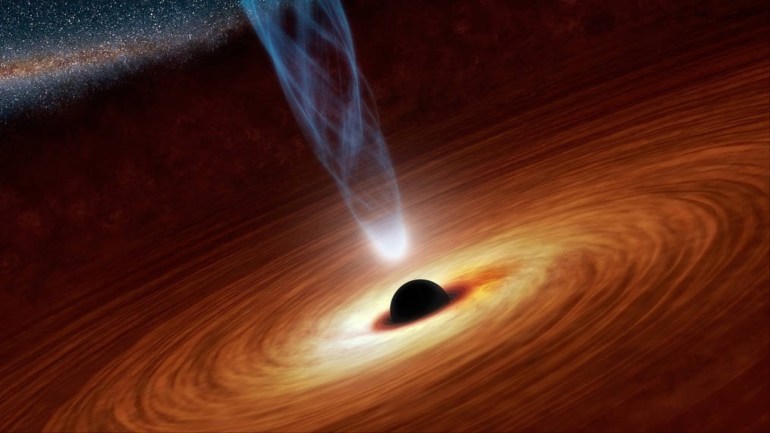A research team from Ohio State University was able to monitor a black hole located at a distance of 1500 light-years from planet Earth, and that makes it, according to an official statement issued by the university on April 21, the closest black hole to Earth was discovered Until now, he was called "unicorn".
Black holes are the final stage in the life of giant stars, as the material of the star collapses in on itself with a huge explosion that leaves in the center a dark ball with a tremendous ability of attraction, to the point that the light itself cannot escape from its hands.
Black holes are the final stage in the ages of giant stars (NASA)
Red giants
To reach those results, which were accepted for publication in the Monthly Notices of the Royal Astronomical Society, this team examined a red giant orbiting the unicorn black hole with 3 telescopes, which is the Kelt Observatory in the state of Arizona, USA, the "ASAS" observatory in Chile, and the "TESS" satellite of NASA.
The red giants are a huge class of stars with low temperatures. If the Sun were the size of a pea, one of these stars would be the size of a basketball.
Scientists cannot achieve a direct observation of black holes, because they do not emit any light but rather absorb it, so they monitor the impact of black holes on the objects next to them.
Because of the powerful attraction of the black hole, it affects the shape of the red giant that is orbiting it, and by extension affects the nature and intensity of the light coming out of it.
And when telescopes on the ground pick up the light from this red giant, it can confirm that it is orbiting a black hole, which is what happened in the case of "unicorns", according to the study.
Astronomers think that the Milky Way contains 10 million to one billion black holes (NASA)
3 suns
The most striking in these results is the mass of this new black hole, it is only equal to 3 solar masses, which means that it is also the smallest black holes discovered so far, and it falls into a completely new class of black holes that requires further study.
Since the discovery of the first black hole in our Milky Way galaxy, which was called "Chicken X-1, a large number of researchers have been interested in searching for these strange objects in the sides of our galaxy and studying them, and now we know that there are tens of them, and astronomers think that the Milky Way contains 10 Millions to a billion black holes.

